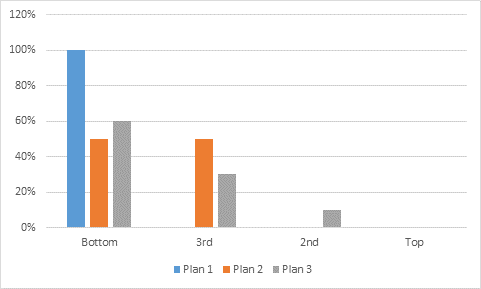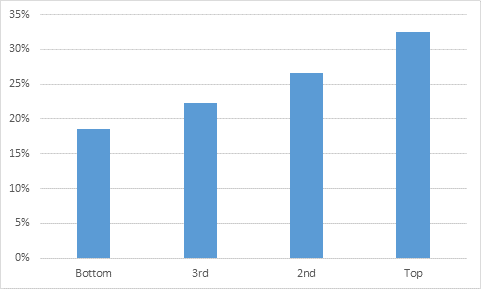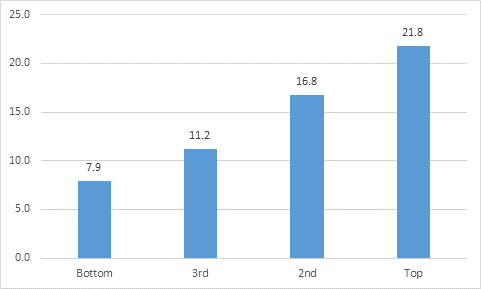To the extent that finances act as a barrier to higher education, they are an obstacle to those without resources – that is, those who tend to come from lower-income backgrounds. It is, therefore, simply common sense that if you want to relieve financial barriers, you concentrate resources among those with the fewest means.
Except, it doesn’t seem to be common sense among many of those who consider themselves “progressive” in Canada. “Progressives”, for reasons that are almost incomprehensible, prefer solutions that give far more money to students from high-SES backgrounds. Why? Good question.
The best way to focus aid is to use grants based on income (or, second best, on assessed need). By using income-targeting, you can get money to exactly who you want. Say you have $100M that you want to put towards affordability. Want to give all of it to students in the lowest income quartile? You can do that. Split it between the bottom two income quartiles? You can do that, too. Or maybe spread it out a little more thinly so that it cuts out gradually – say, 60% to bottom income quartile, 30% second quartile, 10% third quartile? You can do that, too. Grants make many different types of investments possible.
Figure 1: Some Possible Distributions of Grants Across Income Quartiles
But some people despise this idea. Some people say things like, “lower tuition is the best form of student aid”. Implicitly, because people from richer families are likelier to attend post-secondary education, the distribution of $100 million, if delivered in the form of a tuition cut, looks like this:
Figure 2: Distribution of Benefits of a Tuition Reduction, by Income Quartile
That doesn’t actually look so good compared to a grant, does it? In fact, it’s even worse than it seems. That’s because a $100 million reduction in tuition ends up affecting other types of aid as well. For every dollar of tuition reduced, students and their families lose 21-28 cents (depending on the province) in tax credits. And, to the extent that anyone has provincial need-based grants (as opposed to the mainly income-based federal ones), a dollar less in tuition means a dollar less in need, which in many cases means a dollar less in grant. Thus, for high-need students (which is not quite the same thing as low-income students, though there is some overlap), a dollar less in tuition can mean $1.25 less in non-repayable aid. That is to say, they are worse off after the tuition reduction than they were before. But the rich kids who had no need of student aid to begin with? They’re better off by $0.75.
All told then, if you spend $100 million to reduce tuition, the spread of benefits looks something like this:
Figure 3: Distribution of Benefits of a $100 Million Tuition Reduction, by Income Quartile, in Millions
Of the $100 million in reduced tuition, $42 million gets recouped by one level of government or another, either through reduced tuition tax credits or reduced grants. Of the remainder, only 13% goes to the poorest quartile, and only 38% goes to the bottom half.
So, ask yourself: who’s progressive? The folks who want to give 50, 60, or 100% of their money to kids from the bottom income quartile? Or the folks who want to give almost three times as much to the top quartile as to the bottom?




 Tweet this post
Tweet this post

Excellent post today! Undoubtedly less provocative than the “net zero tuition” argument, but much more accurate and impactful if you ask me! I hope there’s an editorial coming in the Globe on this!?
One of the disturbing aspects of income based financial need assessment without parental income checks is that we are seeing students who come from wealthy families and are completely supported by them, qualifying for what are supposed to be needs-based federal grants offered by the Part Time Assistance Program. Since the students report as “no income” and there is no parental income required, they receive maximum grant as they qualify as high need which they clearly are not. Until the federal government plugs this large loophole, there will continue to be people taking advantage, and we have no ability to stop them. It’s frustrating because at the same time, I’ve seen students who have genuine financial need face bureaucratic hurdles because of some minor technicality